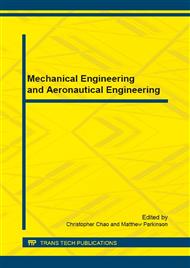p.90
p.95
p.103
p.110
p.118
p.123
p.128
p.133
p.137
Unmanned Vehicle Path Optimization Based on Markov Chain Monte Carlo Methods
Abstract:
Recently, unmanned vehicle (UV) research has increased its popularity around the globe not only for military applications but also for civilian uses. For military fields, UVs can enhance homeland defense, carry out coast and air surveillance, counter terrorists and most importantly, reduce harm to the manned force when certain mission may contain threat. As a consequence, UVs become an inevitable part of the Navy Force and extend the Navy mission handling capabilities. When it comes to research, UVs can be used to observe the climate, deliver goods, perform undersea testing, etc. But the open environment is dynamic, unforeseen and fast changing. Thus, a UV which has the ability to choose the optimal path autonomously based on the current situation not only can increase the efficiency of the UV, but also can save costs and time for the users. As a result, increasing the autonomy of the UV has attracted the attention of many researchersin recent years. Our research is based on the Markov chain Monte Carlo simulation model. We develop a simulation model architecture so as to realize collision free path planning and path optimization of an unmanned vehicle.
Info:
Periodical:
Pages:
133-136
Citation:
Online since:
March 2016
Authors:
Price:
Сopyright:
© 2016 Trans Tech Publications Ltd. All Rights Reserved
Share:
Citation:


